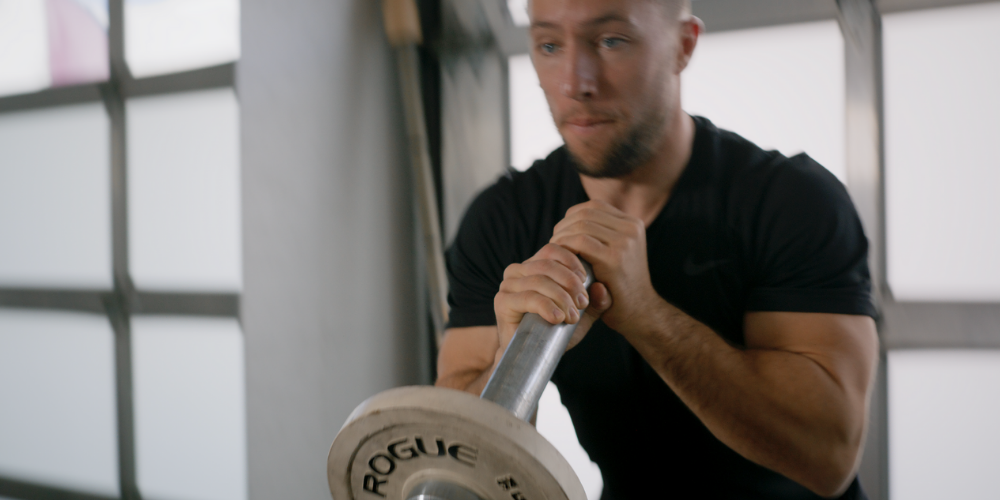
How To Train Before Your Ski Trip
Today I had to answer a tough question: Should I train today if I’m going on a ski trip tomorrow? The answer, was “YES”, of course, and I’ll explain why in this post.
To answer this question you must first consider your typical training output and the expected demands that skiing will place on your body. As i'm writing this on Tuesday,I know that Thursday and Friday (today) will be my two most demanding days on snow. Mammoth has been blessed with 30” of new snow over the last 24 hours and I can expect to be skiing some fresh powder and a lot of sloppy seconds. Because of this, I know that the terrain will vary in consistency and therefore place inconsistent demands on my body. So, we can call this two days of moderate to high intensity.
I'll be skiing full days from first chair to last chair provided the conditions hold up.
Since I know I’m going to ski back to back days, I knew I had to maintain my same training intensity and volume (sets x reps x load). That’s because I know when I arrive at the mountain and place the stress of skiing on my body, I want it to be conditioned and ready.
The thought alone of having a full day of rest followed by a 7 hour drive made my hip flexors feel tight. Plus, I like to use training as a litmus test to see what parts of my body, if any, are particularly tight or bothersome. Fortunately nothing was out of the ordinary.
I also wanted to train prior to this trip to take advantage of a concept called “Supercompensation”. Supercompensation describes the optimal training/recovery window wherein your muscles peak in recovery and capabilities at roughly 48 hours following the training stimulus (workout). Essentially, when you train, you break down muscle tissue whereby you're actually weaker at the end of a training session than when you began. Of course, the body goes to work to repair the tissue and this is what leads to improvements in strength. If I’m training today, and I’ll be skiing 48 hours from now, I will be perfectly targeting this peak phase of recovery. This will optimize my body’s ability to perform relative to my current state of conditioning.
Key Elements To Consider
FREQUENCY
If you choose to train close to a ski trip, it’s important to consider your individual level of fatigue and workload. If, for example, you’re only used to training 1x per week and you’ve already completed your training day, it might not be optimal to add the additional day prior to your trip. Put simply, only execute the same frequency of training in advance of a trip that you’ve been conditioned to do over the previous 3 weeks. That is a sufficient acclimation period and will allow your body time to respond positively to changes in training frequency.
INTENSITY
Intensity is typically calculated by the percentage of weight moved in an exercise relative to your maximum capabilities in the same exercise. If, for example, you can back squat 100 pounds for 1 rep, we would call 100 pounds your 1 Rep Max, commonly noted as 1RM. In this example, 70 pounds would represent 70% of your 1RM. So the “intensity” of this set of back squat at 70 pounds would be 70% intensity. Make sense? Because 100% is nearly impossible and 0% is too easy. You can almost think of it as a 1-10 scale of difficulty represented by percentages of individual capability.
When you’re anticipating a ski trip, it’s important to execute all your typical training movements. However, I would advise you based on experience, to drop your training intensity to a maximum of 70% for any exercise performed. It does’t make sense to train at higher intensities because you’re not attempting to build new strength or capabilities, rather, you’re looking to optimize the strength and capabilities that you currently have.
VOLUME
Volume represents the total amount of reps performed. If you did 3 sets of 10 reps of back squat, that would be 30 units of performed reps. 30 would represent your volume for this exercise. When considering volume in training and upcoming ski trips here’s the rub: Maintain the same volume that you’ve been accomplishing over the previous 2-3 weeks. Do not look to increase volume because increased volume can lead to new levels of soreness or fatigue that you’re not accustomed to. Let's be honest, nobody wants jello-legs on their ski trip. Managing weekly training volume is a great way to accomplish the benefits of training stimulus without increasing total fatigue prior to expected performance (skiing).
——
If you take the 3 themes above into consideration, modify your elected Ski System training program, and carve out a little extra time for stretching and mobility, you will maximize your on snow performance during your upcoming vacation. Remember, consistency, not intensity, is king. By staying committed to your training during the season, you’ll never have to “ski your legs back into shape” again. It will be all smooth sailing, sending everything you want to send, without a single step backwards.
Train smart, stay consistent, and have an amazing season!
- Abe